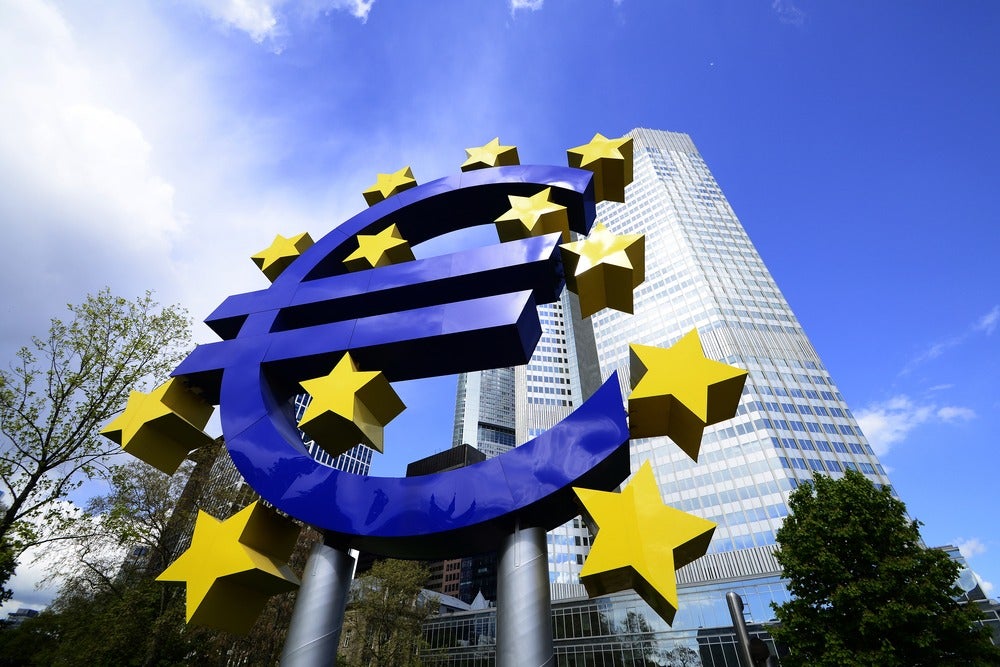The European Central Bank’s (ECB) decision to end Quantitative Easing (QE) is a poor one coming at a time of rising political and economic turmoil across the Eurozone.
On 13 December the ECB announced the end of its asset purchasing programme, known as QE, almost four years after it was launched.
In this time, the ECB has injected more than €2.6 trillion of QE into Eurozone banks’ balance sheets through the purchase of government and corporate bonds, boosting liquidity and credit supply.
This programme has supported the European banking system and aided Eurozone economies to avoid a deflationary spiral and to achieve growth, but as the recovery of Eurozone economies remains weak, calling time on QE appears to be a poor decision.
Although withdrawal of the QE stimulus may take time to be felt, as the ECB will continue to reinvest proceedings from maturing bonds, Eurozone economies will find it harder to raise money from now on, and this comes at a time when political uncertainty is on the rise and the single currency is being challenged.
ECB ends QE programme
Economic growth in the Eurozone has lost some traction since the first quarter of 2018, falling to 1.6% year-on-year growth in Q3, which is the slowest growth rate since the second quarter of 2014, when the QE programme did yet not exist.
How well do you really know your competitors?
Access the most comprehensive Company Profiles on the market, powered by GlobalData. Save hours of research. Gain competitive edge.

Thank you!
Your download email will arrive shortly
Not ready to buy yet? Download a free sample
We are confident about the unique quality of our Company Profiles. However, we want you to make the most beneficial decision for your business, so we offer a free sample that you can download by submitting the below form
By GlobalDataWage growth may have accelerated in recent months, supporting private consumption, and thereby inflation – in fact, the rationale for ending QE has been in line with inflation reaching the ECB’s 2% target for the last six months – but this trend is expected to be checked as economic growth slows.
Slow improvements in the labour market are also indicative of slowing economic activity, with unemployment rates having plateaued during the third quarter of 2018.
In the face of ongoing economic and political uncertainty, economic growth rate projections have been trimmed by the ECB, and Eurostat (the statistical office of the European Union).
The French Connection
The recent social unrest in France adds to the existing economic and political uncertainty in the Eurozone, which is reflected in the increasing cost of borrowing in bond markets.
Besides, the impact of this unrest is not limited to a short-term negative shock for the French and Eurozone economies; it also undermines confidence in the single currency and, given the rise of Euroscepticism, threatens the cohesion of the EU.
The Italian Job
The current dispute over the Italian budget deficit could be a catalyst for further change.
The size of the Italian government deficit is not the problem per se, as the effects of QE will fade over time, rather what the government needs is an expansionary policy to support growth as its banking system remains fragile and at a time when borrowing costs are expected to increase.
Such a policy, of course, would create further tensions among Eurozone members, risking the future of the single currency.
The Good German
The potential return of QE, or similar monetary-relaxing policy, should not be overlooked. Tough times lie ahead and it is reasonable to assume that the ECB has decided to cut back QE because it wants to keep some money-supply firepower in the tank if called on to do so again.
However, Germany’s stance will be a crucial parameter; its opposition to a relaxed monetary policy will continue to be strong, as the low-interest-rate environment has already eroded the savings of average German taxpayers. In fact, the resentment of German voters towards the incumbent government in recent elections has much to do with this, thereby reinforcing an attitude that may prove fatal for the future of the Eurozone.









